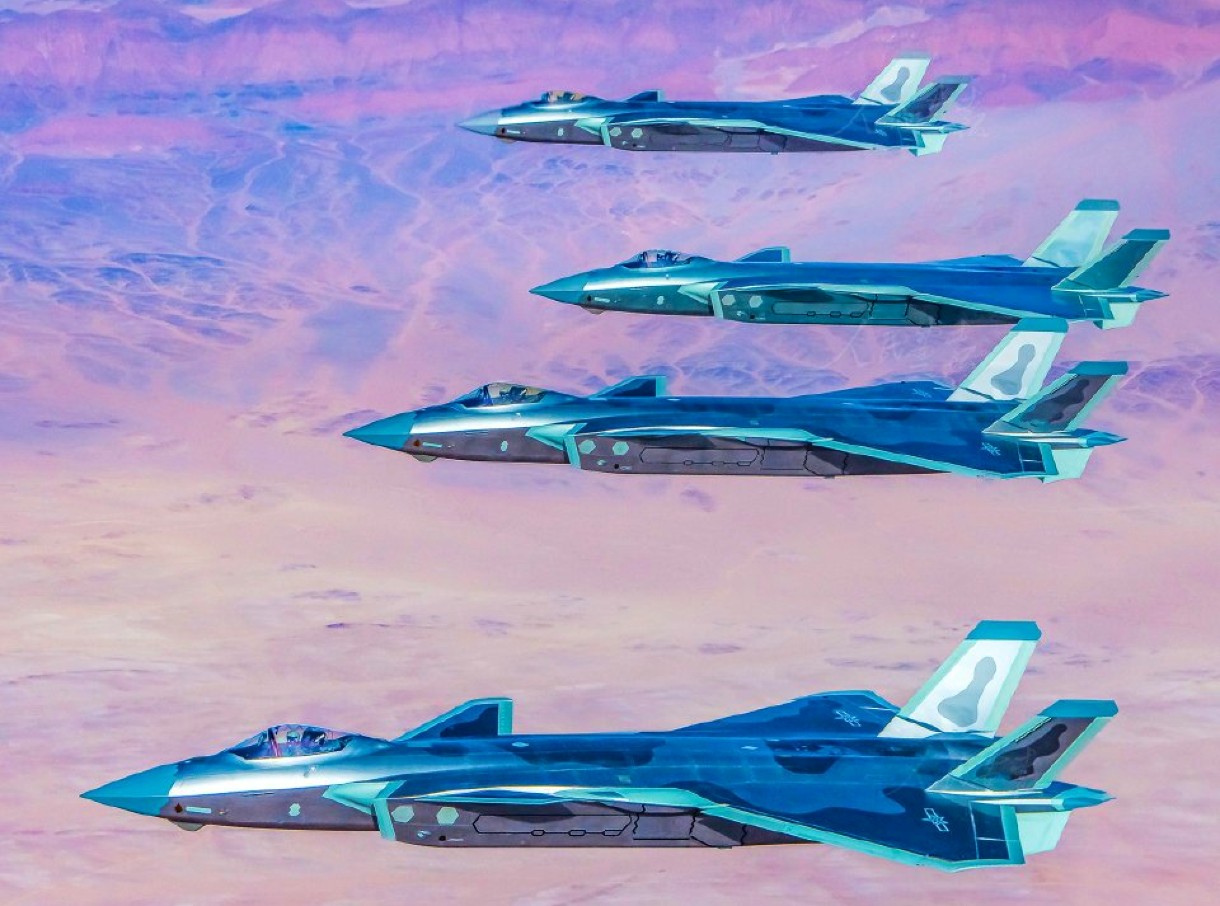World’s Largest Air Force: China Set To Replace The US As Country With Maximum Warplanes – Top Official

A high-ranking US military official has suggested that China’s burgeoning military might now extend beyond its status as the world’s largest navy: it could soon claim the title of the world’s largest air force as well.
Navy Adm. John C. Aquilino, the head of U.S. Indo-Pacific Command, disclosed this information in a recent testimony on Capitol Hill. His remarks shed light on China’s ambitious military modernization efforts and their potential to reshape global power dynamics.
Aquilino, before the Senate Armed Services Committee on March 21, asserted, “the world’s largest Navy, soon to be the world’s largest Air Force,” regarding the People’s Liberation Army.
“The magnitude, scope, and scale of this security challenge cannot be understated, all would be challenged,” he added. Aquilino’s remarks were directed towards the sheer number of warplanes in possession by each country’s military forces.
In its 2023 report on Chinese military power, the Pentagon noted that the PLA Air Force and Navy combined have over 3,150 total aircraft, excluding trainer variants and unmanned aircraft systems (UAS). This revelation underscores the formidable growth of China’s aerial capabilities.
In contrast, the US Air Force boasts of approximately 4,000 non-trainer, non-drone aircraft. Additionally, the United States maintains several thousand more aircraft across its Navy, Marine Corps, and Army branches.
Based on these numbers, while China may not immediately surpass the US in military aircraft, its substantial increase in production capacity, particularly for advanced fighters, indicates a significant upward trajectory in its air force capabilities.
On the other hand, the US Air Force is facing challenges in maintaining its size to effectively fulfill its global responsibilities, particularly the emerging threat posed by China.
The US Air Force’s current strategy appears to prioritize reducing airpower capacity over investing in more advanced systems in the future.
The rationale behind this approach is to retire old aircraft to make way for new, more sophisticated ones. By reallocating funds saved from retiring outdated systems, the Air Force aims to procure next-generation aircraft that will enhance its overall capability.
While the newer aircraft are technologically superior to their predecessors, the US Air Force presently maintains a critical numerical advantage over most of its adversaries. However, if the current trend of cuts continues, this numerical advantage could significantly diminish and will pose risks to national security.
This strategy relies heavily on the assumption that the US Congress, already facing financial constraints, will allocate substantial funding to support the development and acquisition of the next generation of aircraft, which are expected to be part of the costly, long-term sixth-generation program.
Such reliance on uncertain funding raises concerns about the feasibility and sustainability of the Air Force’s strategy, particularly its ability to maintain its numerical superiority amidst the evolving capabilities of the Chinese military.
Quality Versus Quantity Assessment
China has emerged as the builder of the world’s largest naval fleet, boasting an impressive arsenal of over 340 warships. In recent years, Beijing has made significant strides in naval modernization, introducing large guided-missile destroyers, amphibious assault ships, and aircraft carriers capable of operating in the open ocean and projecting power across thousands of miles.
Despite this formidable numerical advantage, experts argue that a quality-versus-quantity assessment is crucial when comparing the naval fleets of China and the United States.
While China may surpass the US Navy in sheer number of ships and submarines, the tonnage of America’s naval fleet dwarfs that of China by a 2-to-1 ratio.
This disparity is largely attributed to the larger size of US vessels, which often boast greater capabilities and firepower compared to their Chinese counterparts. Consequently, the US Navy maintains a significant qualitative edge over China, bolstered by its powerful fleet of aircraft carriers, advanced destroyers, and submarines.
Similarly, on the air side, China has made significant strides in ramping up the production of modern military aircraft. One notable example of China’s advancements in military aviation is the production of the PLA’s most advanced fighter jet, the J-20.
In recent years, the production of J-20s has increased significantly. Estimates indicate that around 40 to 50 airframes will be built in 2022, and this number will rise to approximately 100 in 2023.

Remarkably, these production figures have been achieved without any export orders, underscoring China’s commitment to enhancing its indigenous military capabilities.
However, despite these efforts, Chinese military aircraft are often perceived as less technologically superior compared to the advanced aircraft fielded by the United States.
In an article, Indian Air Force’s retired Air Marshal Anil Chopra cast doubt on the performance of the J-20’s AESA (Active Electronically Scanned Array) radar and electronic warfare suite, highlighting China’s lag behind the West in avionics technology. Chopra emphasized that despite being touted as a fifth-generation fighter jet, the J-20’s credentials remain subject to interpretation.
However, the anticipated increase in production rates could propel China ahead. A significant factor contributing to this potential surge is China’s progress in developing homegrown engines, which reduces its reliance on Russian-built engines.
Nonetheless, the current People’s Liberation Army Air Force (PLAAF’s) current lack of numerical superiority over the United States Air Force (USAF) should not be misconstrued as an advantage for the Americans.
Beijing has been strategically leveraging its massive regional missile capabilities to potentially neutralize major US military bases, as well as those of its allies, from which America’s advanced fifth-generation warplanes, such as the F-22 and F-35, operate.
The Chinese strategy aims to tip the balance in their favor by targeting critical air bases, rendering them inoperative and hampering the deployment of US fifth-generation aircraft.
In the event of a conflict over Taiwan, it is widely believed that the presence of a substantial number of fifth-generation warplanes would be pivotal in overriding China’s air force.
China’s extensive arsenal of anti-ship ballistic missiles seeks to deter the United States from deploying its aircraft carriers in the region during a Taiwan contingency. This poses a significant challenge to US naval operations, as aircraft carriers serve as indispensable platforms for power projection and force projection.
Further, the reduction in the number of F-22s, a trend initiated by the US Air Force in 2009, adds another layer of vulnerability to America’s air force. The F-22, renowned for its stealth capabilities and air superiority, plays a crucial role in maintaining aerial dominance and deterring potential adversaries.
Without a substantial presence of fifth-generation warplanes, particularly the F-22, the USAF faces heightened risks of defeat in a possible conflict with China.
- Questions and Answers
- Opinion
- Story/Motivational/Inspiring
- Technology
- Art
- Causes
- Crafts
- Dance
- Drinks
- Film/Movie
- Fitness
- Food
- Giochi
- Gardening
- Health
- Home
- Literature
- Music
- Networking
- Altre informazioni
- Party
- Religion
- Shopping
- Sports
- Theater
- Wellness
- News
- Culture
- War machines and policy

